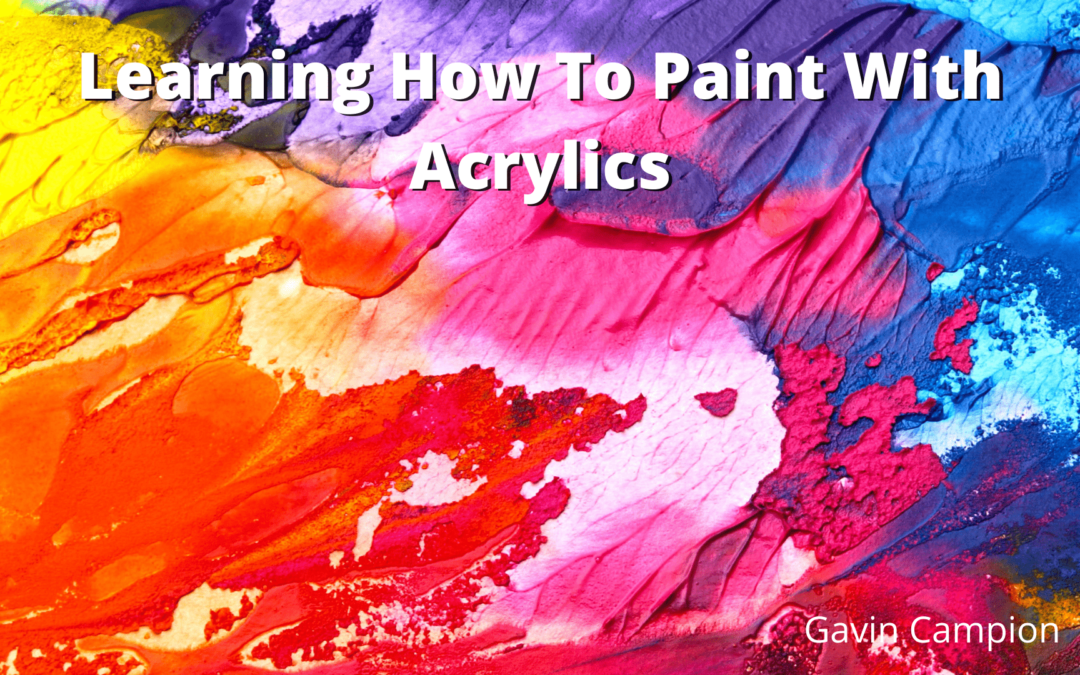Getting the hang of painting with acrylics can be challenging, especially if you’re new to the process.
In this article, we’ll talk about acrylic paint and how it differs from other mediums. We’ll also walk you through the steps of painting with them.
How Are Acrylic Paints Unique?
Before we dive into the process of painting with acrylics, we must first talk about the product and how it differs from other mediums.
According to artist Gary Griffin, acrylics are water-soluble pigments suspended in a type of polymer media that can resist water. They are also fast drying and easy to clean, making them ideal for painting vibrant and bold works.
Unlike oil paints, which typically take a day or longer to dry, acrylics can dry in just minutes. According to artist Camilla Webster, this makes them an appealing medium for people who are new to the process.
One of the most important factors to keep in mind when using acrylics is that they can dry a darker color than the pigment it exhibits when wet. They do not spread, unlike other mediums, and they’re water-resistant, which means that they can’t be altered once they’re dry.
What do You Need?
For acrylic painting, the bare-bones essentials include a palette, a knife, a brush, and a canvas. According to artist Gary Griffin, a wood panel or a gesso-primed canvas is ideal. You can also use paper towels, soap, and water for cleanup.
Various quality materials are available in the market, and choosing the appropriate one for your project is crucial. As a beginner, Webster suggests sticking with lower-cost materials. You can also ask a clerk at an art store for advice.
The Paints
Webster recommends using the brands known for their quality, such as Golden and Winsor Newton. You should also buy a large set of paints, which can be found in art stores or online. If you plan on using many of these products, you should purchase a couple of large tubes of black and white acrylics.
Brushes
According to Webster, artists and students tend to overwork with a lot of products. When it comes to buying supplies, Webster says that you should avoid getting carried away by the large selection of brushes that are available at art stores and Michaels. She advises instead to buy a couple of good quality brushes.
Canvases and an Easel
Before using acrylics, you must have a canvas ready to be painted. You should either buy a pack or make sure the boards are pre-primed. According to Webster, a cheap canvas set will allow you to try out different ideas without worrying about the cost of the finished product.
Although an easel isn’t necessary, it can make painting more pleasurable. An H-frame tabletop easel can cost around $20 to $40, and it can be easily stored at home. You can search through used easels on eBay, CraigsList, or Facebook Marketplace if you want a more robust model.
The Process
Although there are some areas where you can make a change in the step-by-step process, generally, acrylic painting should follow the same format as other types of art. This is because acrylic paints are not as flexible as oil or water-based paints.
1. Set Up
Before you start working on your painting, your space must be tranquil. This can be done by setting up your easel and supplies in a room that is either indoors or outdoors. According to Webster, you should place your canvas on the tabletop, and you should also place a paper towel or a rag near the palette. You can cover the floor with a tarp or an old bag if you’re inside the house.
2. Practice
Getting familiar with the media is the first step in becoming an artist. For instance, before you start working with acrylics, you should first learn about the various factors that affect the process. This can include how fast the paint dries, how it interacts with other colors, and how it sets on the canvas.
3. Find a Concept
You should also start thinking about the type of painting you want. This can be as easy as coming up with a vision in your head or drawing out a basic composition.
4. Paint
After all of that, it’s time to start painting. If you’re still unsure about how to start, we suggest sticking with a couple of colors. On the other hand, if you’re confident and ready to try something new, go with a bold and vibrant design.
5. Preserve
Unlike other types of art, acrylic paints can be easily preserved. They’re also water-resistant, which means they can last for a long time. If you’re planning on adding a dimension to your painting, you should apply a varnish approved for use on acrylics. This will add a shiny, glassy texture to your work and protect it from the effects of paint flaking and scratches.
If you’re not happy with how your first painting turned out, don’t fret. There’s plenty of fun in acrylic painting, and it’s only the beginning.
